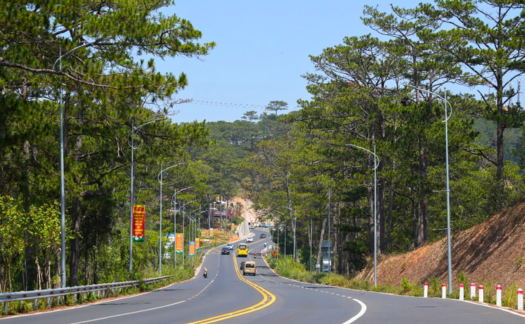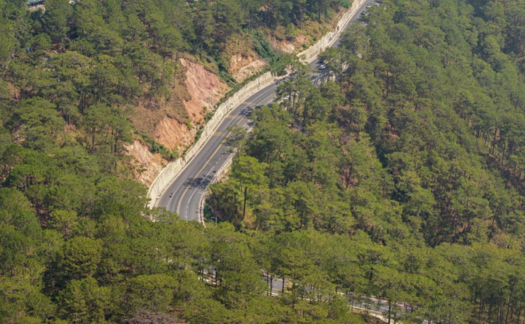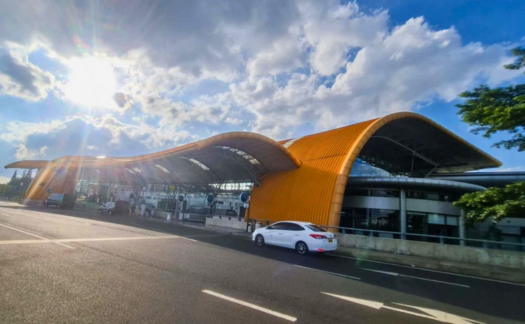Da Lat’s Infrastructure Boom Fuels Tourism & Real Estate
New expressways, railways, and airports in Da Lat aim to boost tourism, connect key regions, and unlock major opportunities for real estate investors.

Table of Contents
Massive Infrastructure Projects Reshape Da Lat's Future
Da Lat, known for its cool climate and colonial charm, is undergoing a major transformation thanks to a wave of multi-billion-dollar infrastructure investments. Once a remote highland town discovered by the French 132 years ago, Da Lat is now being positioned as a regional tourism and economic hub, supported by strategic transportation upgrades.
Historically, Da Lat’s rugged terrain and altitude of over 1,200 meters made access difficult. It took the French nearly two decades to connect the town with surrounding cities like Saigon (now Ho Chi Minh City), Phan Rang, and Nha Trang. Even today, congestion on key routes like the Prenn Pass is a major concern. To overcome these challenges, the provincial government of Lam Dong has committed over $2 billion to revamp the city’s road, rail, and air connectivity.
Billion-Dollar Expressways Slash Travel Time

The two most anticipated projects are the Tan Phu – Bao Loc and Bao Loc – Lien Khuong expressways, which together span nearly 140 km and cost approximately VND 37 trillion ($1.5 billion). The Bao Loc – Lien Khuong segment has already received approval for Phase 1 under a public-private partnership, while Tan Phu – Bao Loc is set for approval before Q3 2025.
Once completed, these routes will seamlessly link with the upgraded Lien Khuong – Prenn highway and the expanded Prenn Pass, slashing travel time from Ho Chi Minh City to Da Lat from 6-7 hours to just 3-4 hours. The expressways will also integrate with the future Long Thanh International Airport and the national ring road system, allowing for regional links with Ba Ria – Vung Tau and the Mekong Delta.
To the east, the Nha Trang – Da Lat expressway is another key project. Spanning 81 km with an estimated cost of VND 25 trillion ($1 billion), the road is expected to reduce travel time between the two tourist cities to just 90 minutes. Internally, Da Lat is also investing in bypass roads and junction upgrades to ease congestion.
Unlocking Economic and Tourism Potential

Besides roads, Da Lat is set to benefit from railway and airport expansions. The most iconic is the planned revival of the historic Da Lat – Thap Cham cog railway. The 84-km route, estimated at VND 27 trillion ($1.1 billion), offers not just transport benefits but also a potential tourism landmark, thanks to its heritage value and unique mountain-climbing design.
Air travel is also getting a boost. Lien Khuong International Airport, classified as a 4E-grade airport by ICAO, currently handles 5 million passengers annually and is set to expand to 7 million by 2050. It will also increase cargo handling and offer direct international flights, further integrating Da Lat into global tourism circuits.
Real Estate Boom Backed by Global Brands
As connectivity improves, real estate is emerging as a clear winner. Enhanced accessibility and booming tourism are attracting top-tier investment into hospitality and residential sectors. One notable arrival is Thai wellness giant Chiva-Som, which plans to transform Da Lat into Southeast Asia’s leading wellness hub.
At the luxury end, the upcoming InterContinental Hotels & Resorts project, expected to open in 2027, will deliver a 5-star experience tailored to elite travelers. With rising demand for premium lodging, the entry of international brands will uplift Da Lat’s reputation and set new benchmarks for service quality.
Ready to invest smartly in Vietnam’s real estate market?
📩 Reach out to Realtique for insider insights, expert guidance, and exclusive property deals tailored for international investors.






